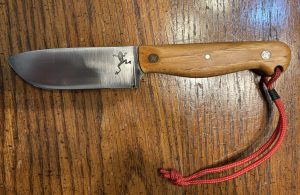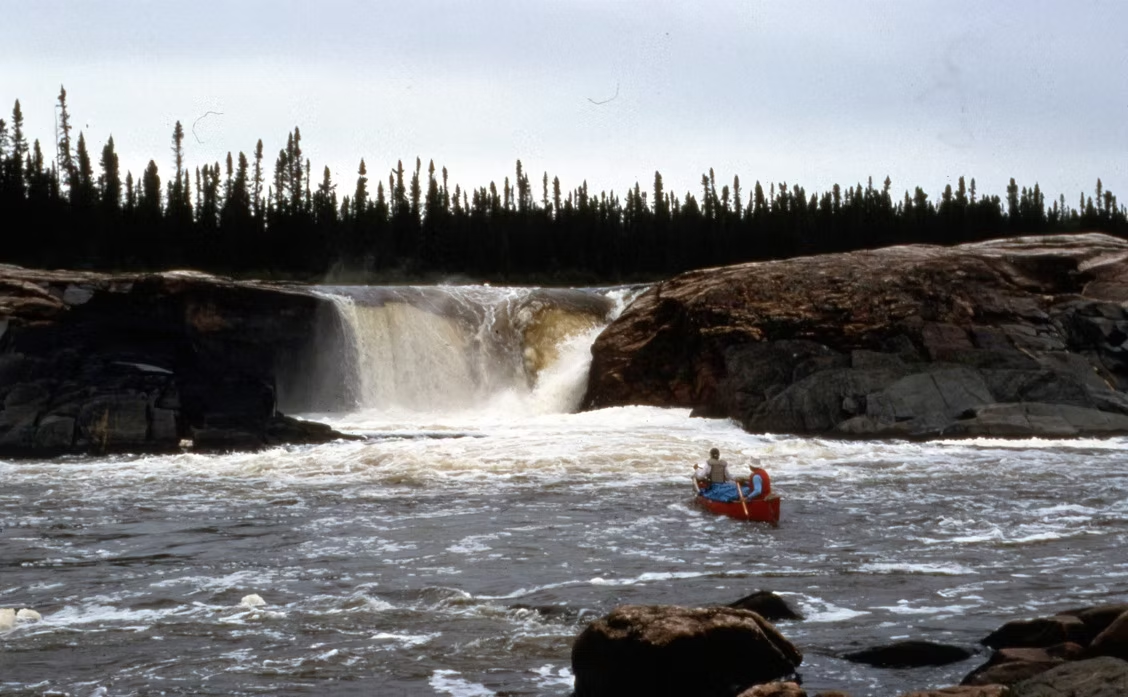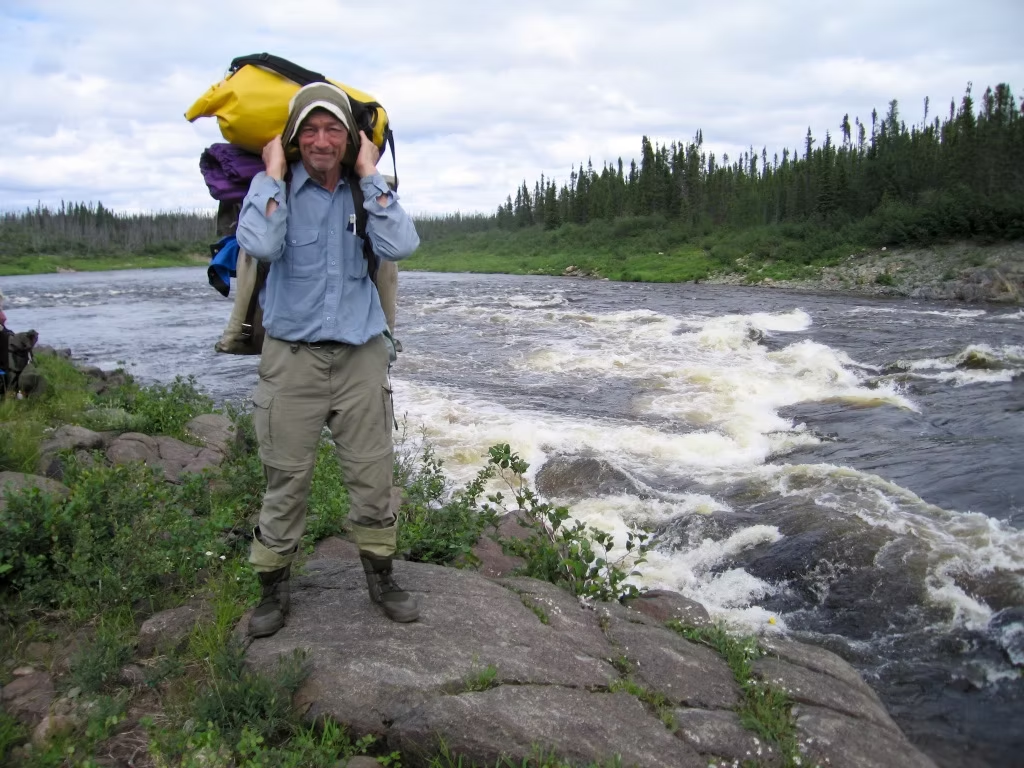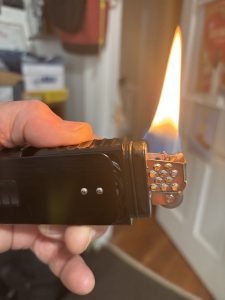
PITFALLS OF FOLLOWING LOCAL ADVICE

North Knife River, Manitoba. A narrow slot on river left (right of the canoe) allows safe passage.
*SCENARIO
Grand Rapids on the Mattagami River (northern Ontario) is more than a mile long and one-fourth as wide. When the water is high, the rapid is quite lively and produces a hollow drone which can be heard for miles. Nonetheless, the rapid is relatively easy if you choose the correct side of the river and stay alert. The rapid is indicated as a long series of hash marks on a 1:50,000 scale topo map.
A local resident offers advice as you and your partner are launching your canoe. He says to watch out for Grand Rapids! “There’s a big ledge on the left that will eat you alive! Stay right and you’ll be fine. I haven’t canoed this stretch but I have fished it a lot. You guys be careful!”
PROBLEM
It has been raining for weeks and the water is very high. Should you follow the local’s advice or put ashore and personally check it out?
HERE’S WHAT THIS CREW DID
They put ashore above the rapid, on the right bank, and cast a long look down stream. Huge rooster tails, far as the eye could see, presented a formidable obstacle. They discussed the matter: maybe they could pick their way between the waves; maybe not. Hopefully, they searched the jungle of head-high alders along the shore for signs of a portage around the rapid. There was none!
From their vantage point, things looked much better on the left side of the river. Unfortunately, they couldn’t see the ledge they were warned to avoid. But, the river was nearly a quarter mile wide at this point, and the current was very fast. Getting to the opposite shore (via an upstream ferry) would be very tricky. What to do?
ACTION TAKEN
The crew decided to run the rooster tails on river right. Within seconds, their 17-foot aluminum canoe capsized and wrapped tightly around a rock. Unable to salvage their canoe or gear, the men abandoned their trip and walked the bug-infested shoreline back to the town of Smoky Falls (about 30 miles), which took them three days.
PROBABLE BEST COURSE OF ACTION
Always go with your gut feeling: if it doesn’t look good, don’t do it! The local fisherman said he was not a canoeist, and this admission should have invoked concern. Also, the water was very high, which could have made the ledge more dangerous, or simply washed it out. At worst, there could be dangerous “keeper” holes at the base of the ledge. At best, it could be runnable. You wouldn’t know until you were there! And then, you would be committed to the outcome.
The team had three choices: they could have:
(1) Lined the canoe up river, along the right shore line. When they were above the worst of the rapid, they could forward ferry (upstream ferry) across the river. Here, they would put ashore well above the ledge then walk the shore line to check it out. If the drop looked safe, they’d run it. If not, they would line or portage.
(2) Portaged and/or lined along the right bank. This would mean horsing the canoes through thick alders. Not fun, but possible.

Portaging a dicey rapid along the North Knife River, Manitoba
(3) Carefully scout the rapid from the right shore, then canoe the safe portions (choreograph the moves from shore) then portage or line the rest. A pair of binoculars would have improved their “rapid-reading” odds considerably.

Here’s what can happen when you don’t scout questionable rapids! And, when you use a flatwater canoe (this “was” a Jensen 18 racing canoe) for a whitewater adventure. Kopka River, Ontario.
XXX
—————————–
My flagship book, CANOEING WILD RIVERS, 5th Edition, contains a wealth of advice on how to safely canoe difficult rivers.
My book CAMPING’S TOP SECRETS, 5th Edition, details practical camping tips and procedures that only the experts know. If you know just a few of these tricks, you’ll be a hero to your friends!
My teen book, JUSTIN CODY’S RACE TO SURVIVAL! mixes a fictional wilderness survival tale with practical outdoor tips everyone should know – a first for books of this type. Adults love it too!
*My long out-of-print book, CANOEIST’S Q&A (available as an e-book and Audible) contains 25 true scenarios (plus FAQ’s and this blog) that define the wilderness canoeing and camping experience – a great training tool for those who go beyond the beaten path.

